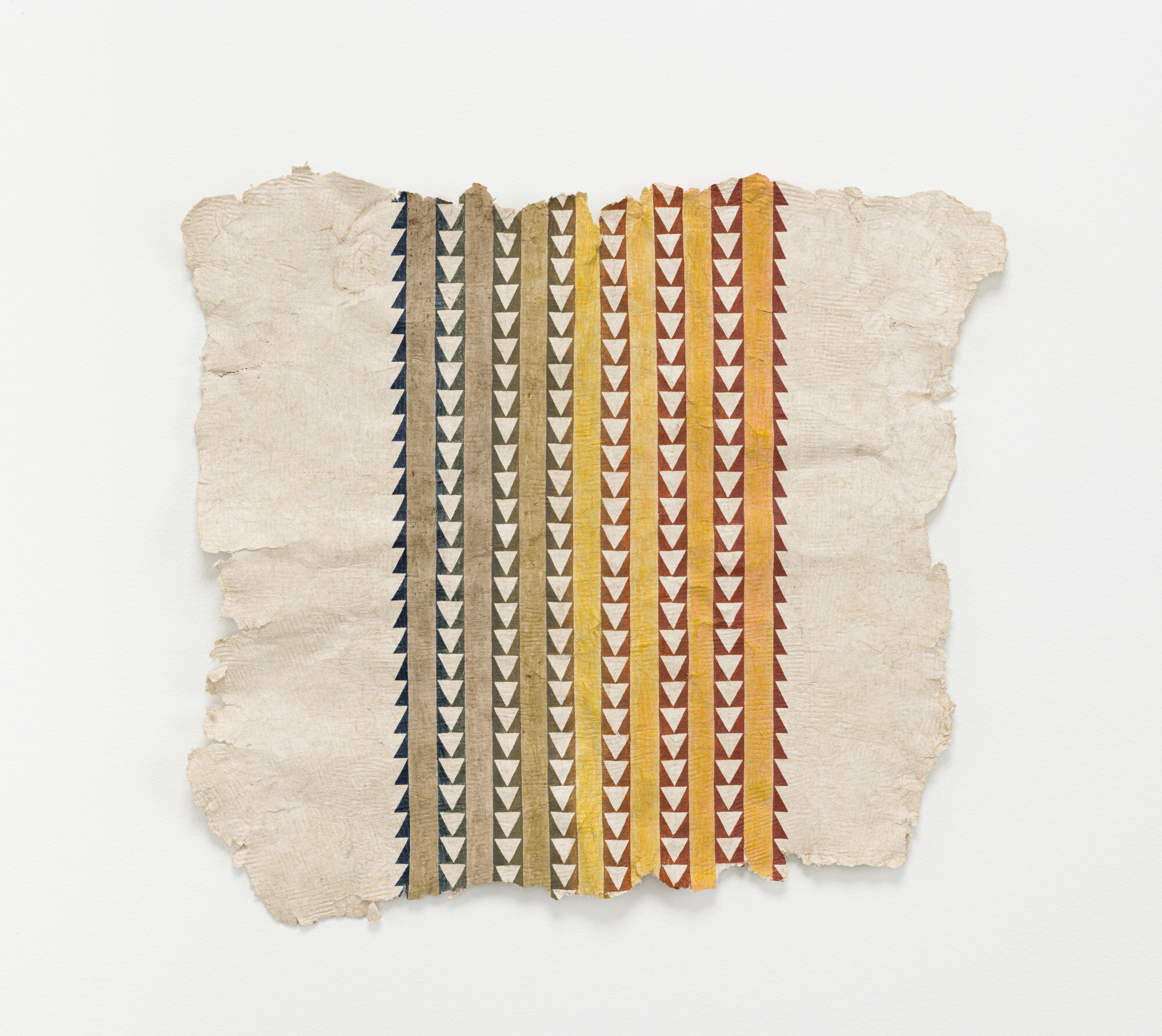Lehuauakea
2021 Ronald and Susan Dubin Fellowship

Photo by Moriel O’Connor, courtesy of the artist.

“Mana Māhū.” Oregon earth pigments and plant dyes on hand-beaten kapa. Lehuauakea, Competed 2020. Photo by Mario Galluci, courtesy of the artist.
The School for Advanced Research is pleased to welcome Kanaka Maoli (Native Hawaiian) artist, Lehuauakea as the 2021 Ronald and Susan Dubin Native Artist fellow. Originally from Papa’ikou on Moku O Keawe, Hawai’i, Lehuauakea creates traditional kapa (wauke bark cloth) that is hand-stamped with patterns made from natural earth pigments and plant dyes. The patterns are created using handmade ‘ohe kapala stamps made from bamboo. Lehuauakea has explained that this practice is a form of storytelling that expresses both traditional and contemporary topics, themes, and ideas.
Lehuauakea comments: “The patterns in my work are intergenerational, and serve as microscopic representations of mythologies, origin stories, and environmental relationships since time immemorial. Bringing them into my practice allows this visual language to move and shift over time, remembering the ways of living that birthed them in the first place while incorporating contemporary narratives.”
During their time at SAR, Lehuauakea plans to create a series of kapa with hand-stamped patterns that range in size from about 8in x12in to larger works that are approximately 4ft in length or longer. In regard to the pattern work, they have stated that “By the end of the time period, I hope to have a body of contemporary-traditional kapa pieces that tell a cohesive story altogether touching on themes of ongoing political tensions, environmental stresses, and cultural perpetuation from a Kanaka Maoli perspective.”
They have also expressed an interest in possibly preparing strips of bamboo to create new ‘ohe kapala stamps that reflect the Santa Fe landscape. Lehuauakea looks forward to accessing the collection at the Indian Arts Research Center, building a relationship with the surrounding environment, and connecting with other makers in the region.
In their application, Lehuauakea emphasized the importance of the intergenerational nature of kapa making. They have been working in the medium for about 6 years or so and are the first kapa maker in their family line in at least seven generations, but it is their lifelong goal to ensure that they will not be the last.
Lehuauakea will be in residence from June 15, 2021 – August 15, 2021.